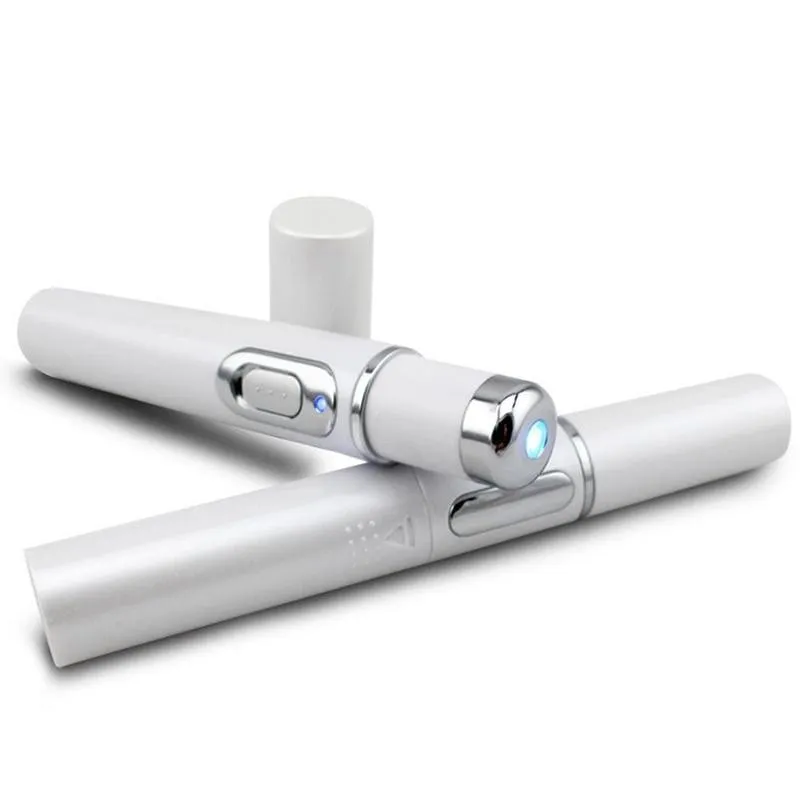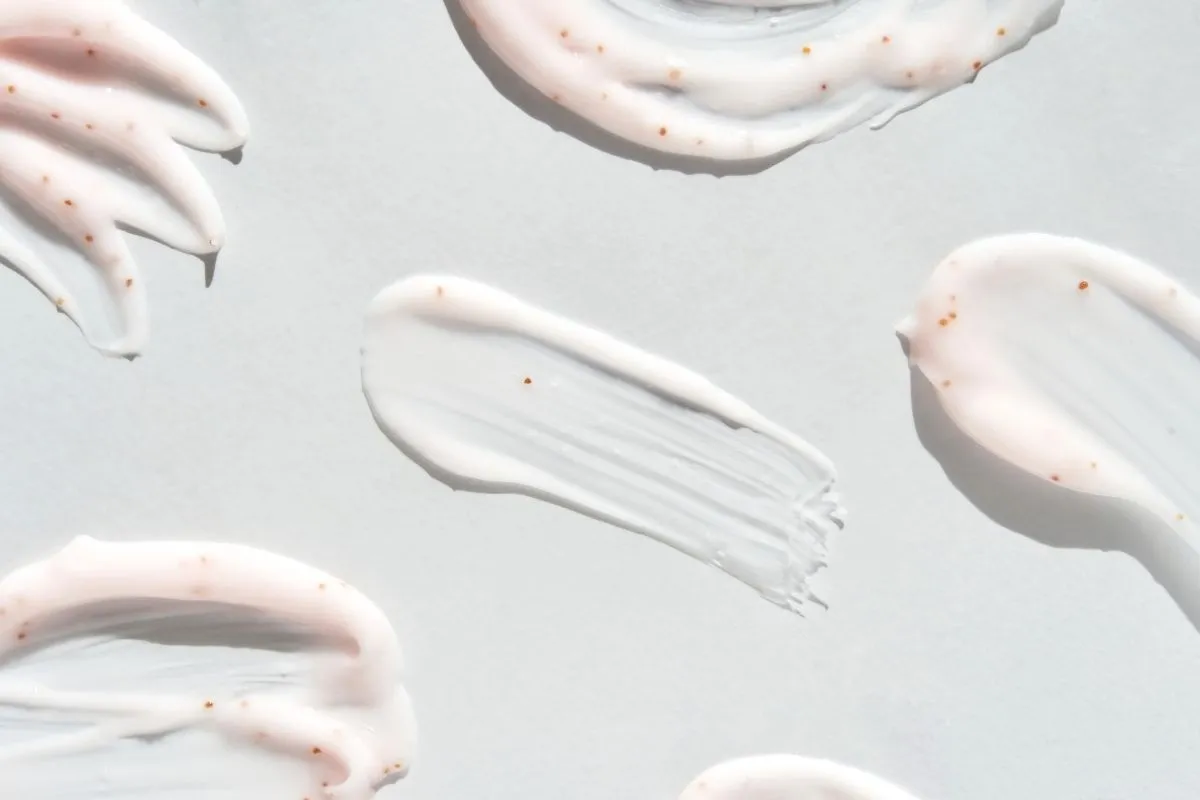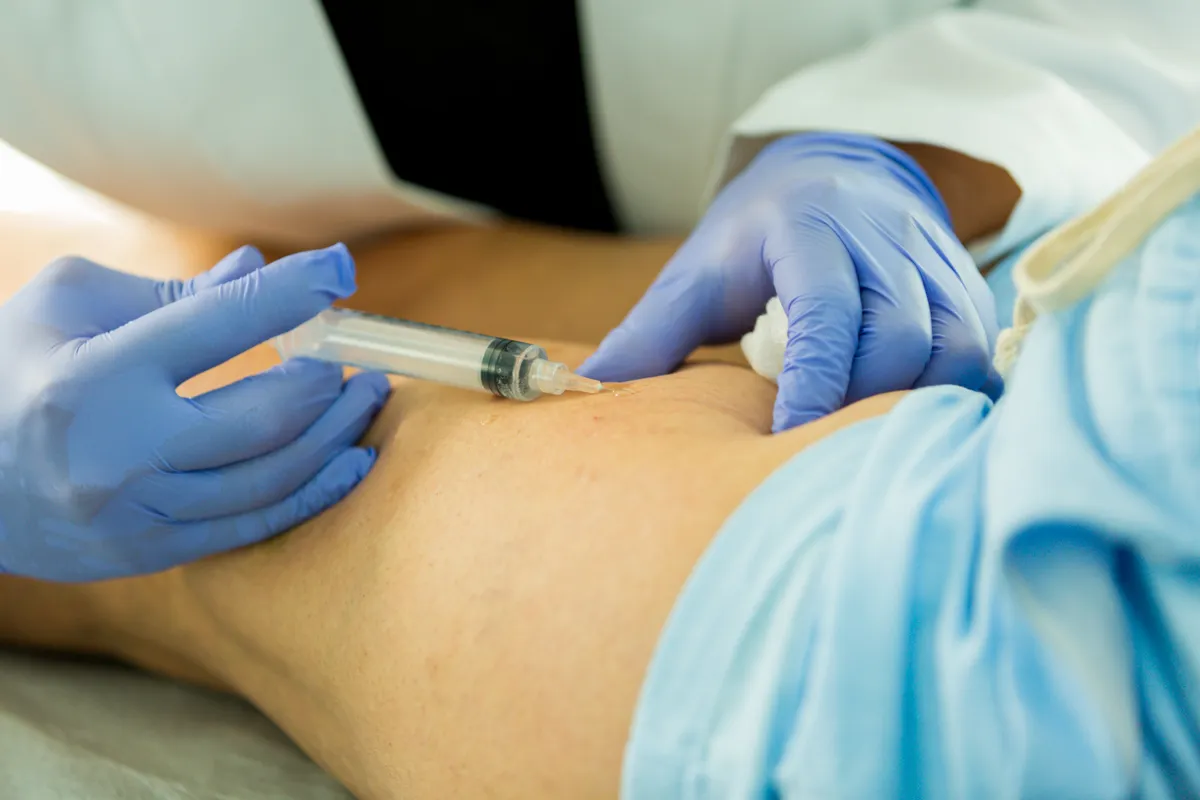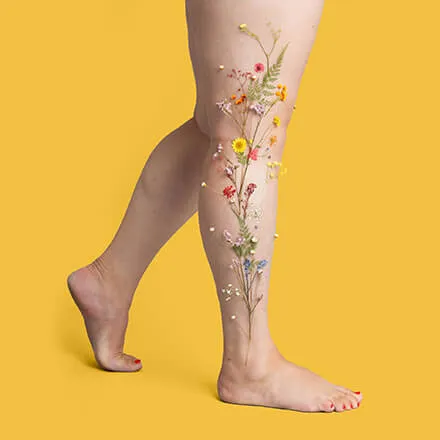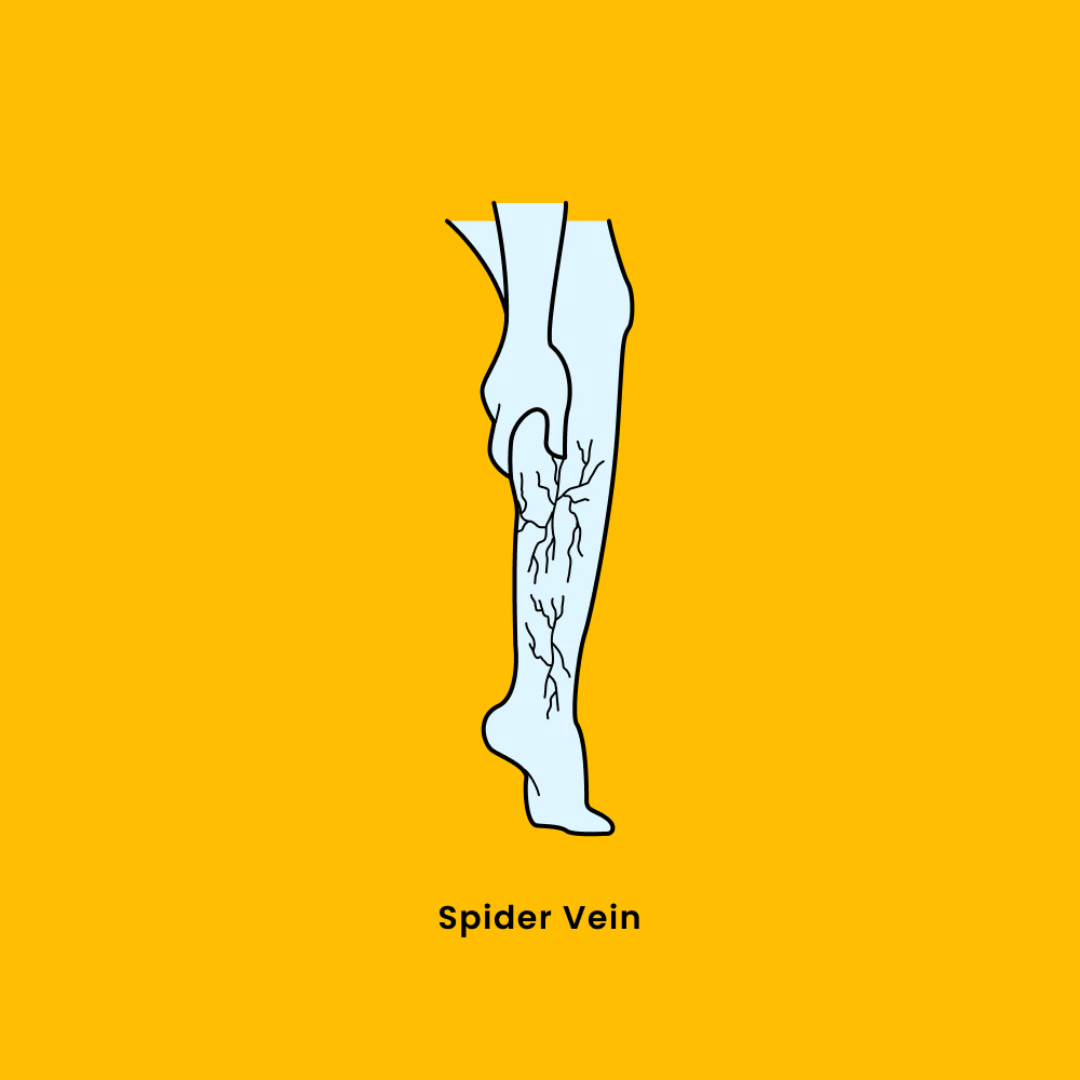
Spider Veins
These veins are small damaged veins with trapped blood that appear on the surface of the skin and resemble the delicate strands of a spider’s web. Spider veins may cause insecurity as they are visible behind knees, along thighs and calves, and in the pelvic region—wherever veins are working against gravity. These weakened blood vessels are a cosmetic nuisance but usually not painful.
What are spider veins?
These veins are apparent on the surface of the skin and resemble the delicate strands of a spider’s web. They can look blue, green, red, or purple depending on the complexion.
Spider veins may cause insecurity as they are visible behind knees, along thighs and calves, and in the pelvic region—wherever veins are working against gravity. These weakened blood vessels are a cosmetic nuisance but usually not painful.

What causes spider veins?
Pressure tends to be the main cause of visible spider veins. Valves inside the veins weaken, and blood can flow backward, away from the heart. A buildup of blood in the vein can start spreading out after a while, showing up as colorful spider veins.
Even when spider veins are only a cosmetic concern, they can signal an underlying medical condition called venous insufficiency which requires medical treatment to fully resolve. Venous insufficiency is a progressive disease and should be evaluated by a board-certified vein specialist to determine whether vein treatment is recommended.
Are spider veins dangerous?
By themselves, spider veins do not pose any serious health risks. When unaccompanied by symptoms such as aching, cramping, swelling or more, they are simply a cosmetic issue. However, spider veins may be an early sign of weakened valves/chronic venous insufficiency that could lead to uncomfortable symptoms over time. Vein disease is progressive and worsens over time. If your spider veins are painful, you are likely also dealing with the beginnings of varicose veins or weakened valves.

What are the risk factors for spider veins?
Because they may be a genetic or hereditary issue, there may not always be a clear “risk” that leads to spider veins. However, there are some factors that make a person more likely to develop spider veins.
Do you ...
- Smoke?
- Have children?
- Know a family member with spider veins?
- Take hormonal birth control?
- Work a job that requires long hours of sitting or standing?
- Lead a sedentary lifestyle?
Are you ...
- A pregnant or postpartum woman?
- Over the age of 30?
- Diagnosed as overweight?
Women are more likely to develop spider veins than men, as fluctuations or spikes of the estrogen hormone are linked to vein disease. Family history plays a significant role in the appearance of venous insufficiency and spider veins. Most people who have spider veins also have a family member with spider veins or a form of vein disease.
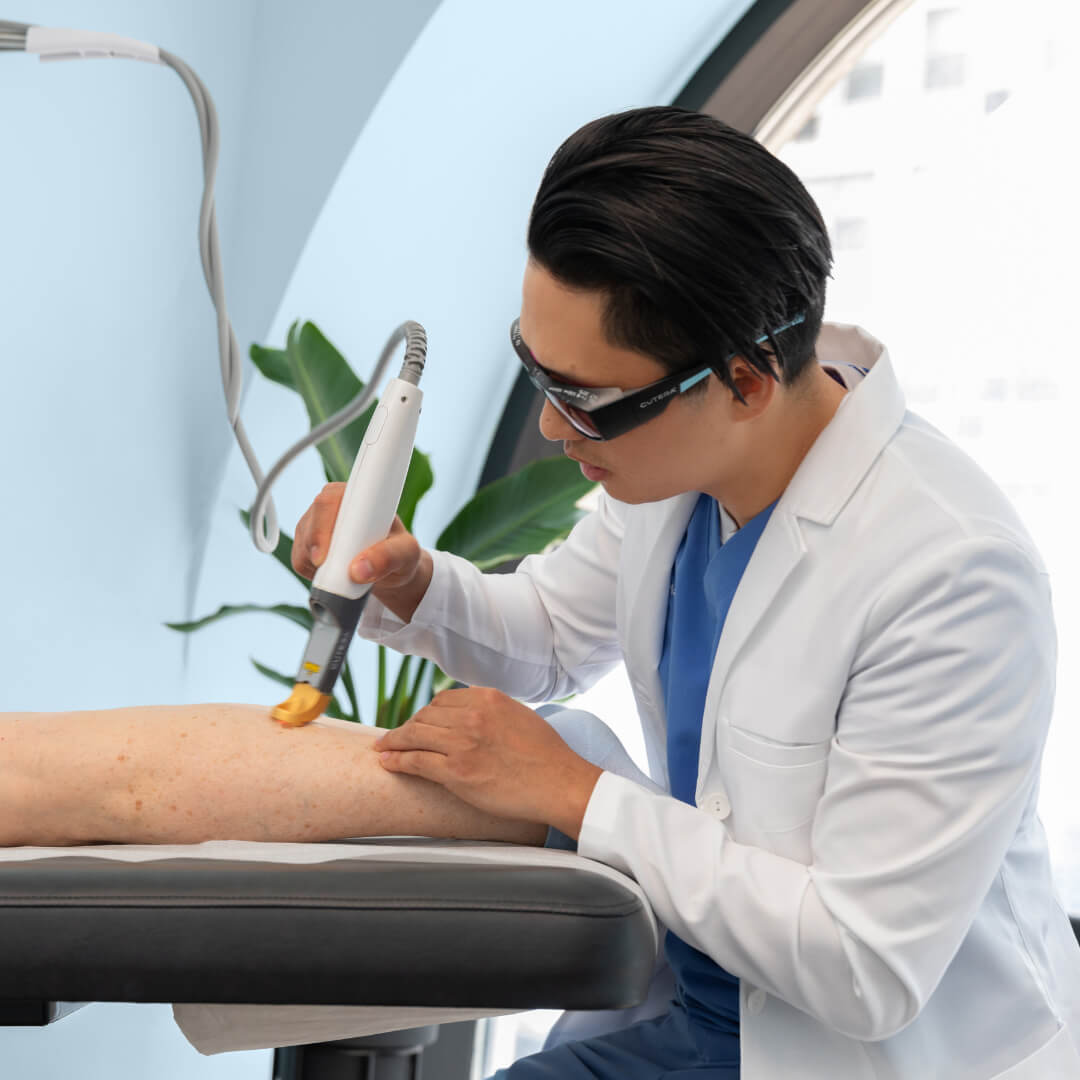
What can you do to treat and prevent spider veins?
Spider veins are typically a standalone issue that can be remedied with laser vein removal (such as excel V+ Laser) or sclerotherapy, an injectable medicine. However, the presence of spider veins on the surface of the skin can also be a flag for greater medical issues beyond what can be seen by the naked eye. It’s always best to consult with a board-certified vein doctor or vein specialist when you notice changes in your veins. Vein disease is progressive, which means it worsens over time if left untreated, and the only way to diagnose vein disease is to be evaluated by professionals. Give us a call! We’re here to help.
For more information on spider veins, book a free evaluation at one of our accredited vein clinics nearest you. We can be reached at 866-629-9848 with any questions.
Myth Busting Q&A
No! This very common myth is heard often in our vein clinics. Crossing your legs does not cause spider veins. However, spider veins can be caused by sitting regularly for long periods of time, such as in office settings. Regardless of whether you’re crossing your legs during this time, the impact of low mobility on circulation can lead to the appearance of spider veins.
Blue light therapy is often touted by med spas or less reputable websites as a quick way of treating spider veins and varicose veins. In fact, “Blue light pen for spider veins” is a highly searched term with millions of results—but don’t be fooled. These inexpensive pens and blue light therapy “solutions” are popular because they’re marketed as a treatment that doesn't require a visit to a doctor, and thus it is the only option med spas can offer. However, the truth is that blue light therapy pens are not proven to be effective.
Although skincare marketing will tell you that vein creams, salves, and ointments can penetrate deeply enough into the skin to address issues like spider veins, this simply isn’t true. No topical cream applied to the surface of the skin will ever treat the exterior or interior of a vein. FDA-approved vein treatments from board-certified vein doctors can treat concerns beneath the surface of the skin with ease, precision, and without pain.
While new spider veins may form on other areas of the legs, treated spider veins will not return. Sclerotherapy, as an example, gently and safely dissolves the affected vein. These veins cannot return, as they are put out of commission to allow blood to reroute through healthy veins. If the underlying cause of unhealthy veins (chronic venous insufficiency) is not addressed by a vein doctor, visible veins may appear in other areas. A common misconception about vein treatment is that the problem veins will return after treatment. This is not the case. However, chronic venous insufficiency does progress when left untreated. Cosmetic treatments cannot solve a medical issue, which is why it’s crucial to be evaluated by a board-certified vein doctor to make sure your spider veins are not indicative of greater health issues beneath the skin. Our vein doctors treat the underlying issue, not just what’s on the surface.
How do Vein Treatments Work?
Vein treatments work by closing off unhealthy veins, just in different ways! Once closed, blood flow naturally reroutes through neighboring healthy veins.
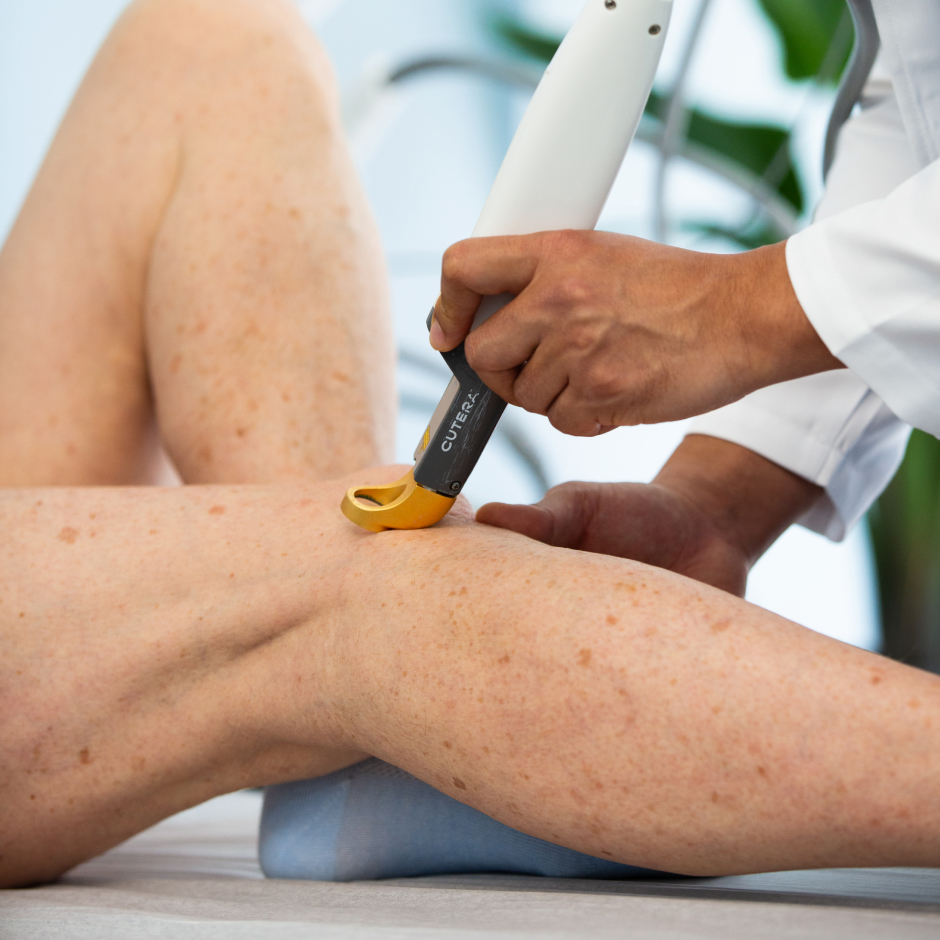
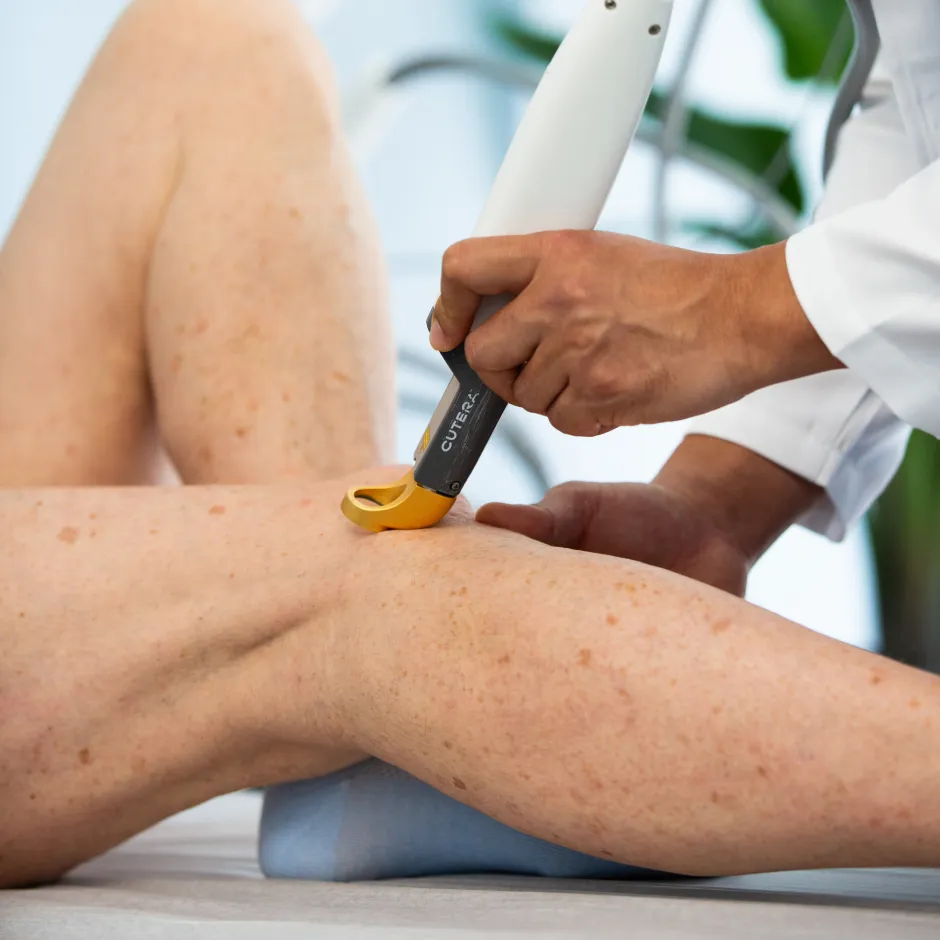
Spider Vein Treatments
- State-of-the-Art
- Ultrasound Guided
- Less Than 30 Minutes
- FDA-Approved
- Minimally Invasive
- Minimal Downtime
Let’s talk about you
What are your spider veins like?
Get a snapshot of your vein health in just a few clicks.


